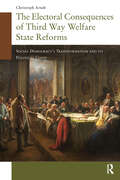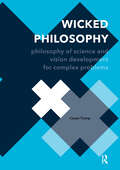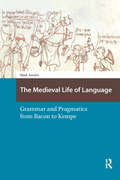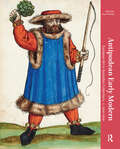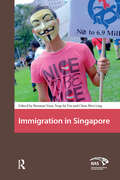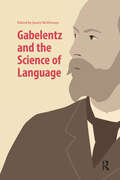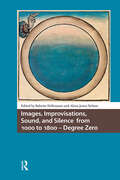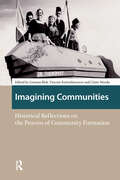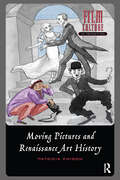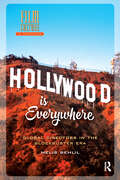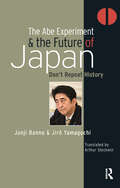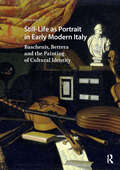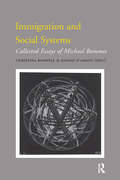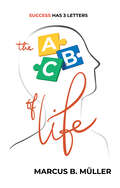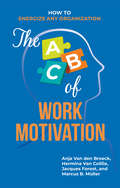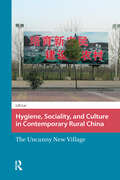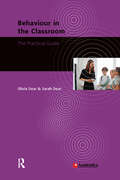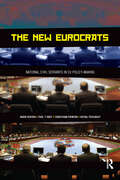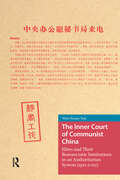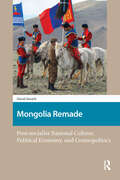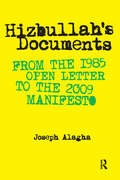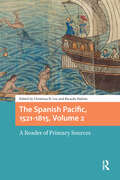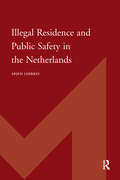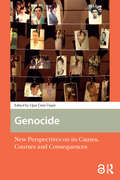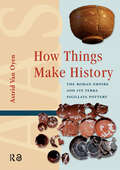- Table View
- List View
The Electoral Consequences of Third Way Welfare State Reforms: Social Democracy’s Transformation and its Political Costs (Changing Welfare States)
by Christoph ArndtIn all advanced Western nations, policy-makers have implemented encompassing welfare state reforms in recent decades breaking with past welfare arrangements. In particular, social democracy engaged in significant policy change under the Third Way paradigm and broke with its traditional reputation on welfare that had built the ties with the core constituency in the 20th century. The Electoral Consequences of Third Way Welfare State Reforms: Social Democracy's Transformation and its Political Costs provides a comparative study of the electoral consequences of Third Way welfare state reforms. The book demonstrates that Third Way reforms went against the social policy preferences of social democracy's core voters and indeed produced an electoral setback for social democrats at the ballots. Moreover, and accounting for cross-national variation, the analysis shows that the nature of the setback is contingent on the electoral system and the party competition social democrats face when reforming the welfare state.
Wicked Philosophy: Philosophy of Science and Vision Development for Complex Problems (Perspectives on Inter- and Transdisciplinarity)
by Coyan TrompWicked Philosophy. Philosophy of Science and Vision Development for Complex Problems provides an overview of the philosophy of the natural sciences, the social sciences and the humanities, and explores how insights from these three domains can be integrated to help find solutions for the complex, 'wicked' problems we are currently facing., The core of a new science-based vision is complexity thinking, offering a meta-position for navigating alternative paradigms and making informed choices of resources for projects involving complex problems. The book also brings design thinking into problem-solving and teaching, fostering construction of an integrative approach that bridges structure and action amplified by transdisciplinary engagement of stakeholders in society. It is not always easy to set up a succesfull philosophy course for students in other programs. The author of Wicked Philosophy, Coyan Tromp, has experience in designing courses on philosophy of science for various Bachelor programs. You can find two examples here. The first example is for an introductory course to an Interdisciplinary Philosophy of Science, which is specifically suited for programs focusing at complex problems such as sustainability or health issues. The second example is a program for a course on (Philosophy of) Science in a Post-Truth Society. More examples are also available (e.g. a program in which Philosophy of Science is combined with Vision Development and Future Scenarios). In addition to the program, the author can also provide a workbook with lesson plans, both for online and on campus settings as well as additional literature suggestions for Dutch and French programmes., Please contact us at marketing@aup.nl for questions or extra material.
The Medieval Life of Language: Grammar and Pragmatics from Bacon to Kempe (Knowledge Communities)
by Mark AmslerThe Medieval Life of Language: Grammar and Pragmatics from Bacon to Kempe explores the complex history of medieval pragmatic theory and ideas and metapragmatic awareness across social discourses. Pragmatic thinking about language and communication is revealed in grammar, semiotics, philosophy, and literature. Part historical reconstruction, part social history, part language theory, Amsler supplements the usual materials for the history of medieval linguistics and discusses the pragmatic implications of grammatical treatises on the interjection, Bacon’s sign theory, logic texts, Chaucer’s poetry, inquisitors’ accounts of heretic speech, and life-writing by William Thorpe and Margery Kempe. Medieval and contemporary pragmatic theory are contrasted in terms of their philosophical and linguistic orientations. Aspects of medieval pragmatic theory and practice, especially polysemy, equivocation, affective speech, and recontextualization, show how pragmatic discourse informed social controversies and attitudes toward sincere, vague, and heretical speech. Relying on Bakhtinian dialogism, critical discourse analysis, and conversation analysis, Amsler situates a key period in the history of linguistics within broader social and discursive fields of practice.
Antipodean Early Modern: European Art in Australian Collections, c. 1200-1600
by Anne DunlopA Prayer Book owned by the Rothschilds, an Italian bronze casket by Antico, a lavishly illustrated Carnival chronicle from sixteenth-century Germany, an altarpiece by Pieter Brueghel the Younger - much of the artwork in this book, held by Australian collections, is essentially unknown beyond the continent. The authors of these essays showcase these extraordinary objects to their full potential, revealing a wide range of contemporary art and historical research. This collection of essays will surprise even specialists.
Immigration in Singapore (Asian Cities)
by Norman Vasu Yeap Su Yin Chan Wen LingThis study traces the socio-political effects of immigration on Singapore and its population, a topic that has been the subject of intense debate in the nation as its population grows increasingly diverse. Beyond the logic of economic imperatives, the book aims to explore the larger consequences of taking in large number of immigrants, and its analysis should appeal to scholars of migration, social change, and public policy.
Gabelentz and the Science of Language
by James McElvennyThe German sinologist and general linguist Georg von der Gabelentz (1840—1893) occupies a crucial place in linguistic scholarship around the end of the nineteenth century. As professor at the University of Leipzig and then at the University of Berlin, Gabelentz was present at the main centers of linguistics of the time. He was, however, generally critical of the narrow, technical focus of mainstream historical-comparative linguistics as practiced by the Neogrammarians and instead emphasized approaches to language inspired by a line of researchers stemming from Wilhelm von Humboldt. Gabelentz' alternative conception of linguistics led him to several pioneering insights into language that anticipated elements of the structuralist revolution of the early twentieth century. Gabelentz and the Science of Language brings together four essays that explore Gabelentz' contributions to linguistics from a historical perspective. In addition, it makes one of his key theoretical texts, 'Content and Form of Speech', available to an English-speaking audience for the first time.
Images, Improvisations, Sound, and Silence from 1000 to 1800 - Degree Zero (Knowledge Communities)
by Alissa Jones Nelson Babette HellemansThe act of drawing a line or uttering a word is often seen as integral to the process of making art. This is especially obvious in music and the visual arts, but applies to literature, performance, and other arts as well. These collected essays, written by scholars from diverse fields, take a historical view of the richness of creation out of nothing (creatio ex nihilo) in order to draw out debates, sometimes implicit and sometimes formally stated, about the production and reproduction of cultural meaning in a period of great change and novelty, between the beginnings of the medieval intellectual tradition and the imprint of the Enlightenment. The authors pose the following questions: Do tradition and creativity conflict with one another, or are they complementary? What are the tensions between composition and live performance? What is the role of the audience in perceiving the object of art? Are such objects fixed or flexible? What about the status of the event? Is the event part of creation, in the sense that it disturbs the still waters of historical continuity? These and other questions build on the foundation of Roland Barthes' concept of Degree Zero, offering new insights into what it means to create.
Imagining Communities: Historical Reflections on the Process of Community Formation (Heritage and Memory Studies)
by Vincent Kuitenbrouwer Gemma Blok Claire WeedaIn his groundbreaking Imagined Communities, first published in 1983, Benedict Anderson argued that members of a community experience a deep, horizontal camaraderie. Despite being strangers, members feel connected in a web of imagined experiences., Yet while Anderson's insights have been hugely influential, they remain abstract: it is difficult to imagine imagined communities. How do they evolve and how is membership constructed cognitively, socially and culturally? How do individuals and communities contribute to group formation through the act of imagining? And what is the glue that holds communities together?, Imagining Communities examines actual processes of experiencing the imagined community, exploring its emotive force in a number of case studies. Communal bonding is analysed, offering concrete insights on where and by whom the nation (or social group) is imagined and the role of individuals therein. Offering eleven empirical case studies, ranging from the premodern to the modern age, this volume looks at and beyond the nation and includes regional as well as transnational communities as well.
Moving Pictures and Renaissance Art History (Film Culture in Transition)
by Patricia EmisonFilm, like the printed imagery inaugurated during the Renaissance, spread ideas – not least the idea of the power of visual art – across not only geographical and political divides but also strata of class and gender. Moving Pictures and Renaissance Art History examines the early flourishing of film, from the 1920s to the mid-1960s, as partly reprising the introduction of mass media in the Renaissance, allowing for innovation that reflected an art free of the control of a patron though required to attract a broad public. Rivalry between word and image, between the demands of narrative and those of visual composition, spurred new ways of addressing the compelling nature of the visual. The twentieth century also saw the development of the discipline of art history; transfusions between cinematic practice and art historical postulates are part of the story told here.
Hollywood is Everywhere: Global Directors in the Blockbuster Era (Film Culture in Transition)
by Melis BehlilHollywood has a long tradition of bringing in emigre directors from around the world, dating back to the silent era. Today, as the film industry is ever more global, the people who make blockbuster movies seemingly reflect this tradition, hailing from many countries across the world. But that fact hides a fundamental difference, one that Melis Behlil examines in Hollywood is Everywhere: today's Hollywood studios are themselves transnational, with ownership structures and financial arrangements that stretch far beyond the borders of the United States. Seen in that context, today's international directors are less analogous to the emigre talent of the past than to ordinary transnational employees of other major global corporations.
The Abe Experiment and the Future of Japan: Don’t Repeat History (Politics, Security and Society in Asia Pacific)
by Junji Banno Jiro YamaguchiWith an author’s foreword written on the day that the Abe cabinet decided to ‘revise the Japanese Constitution by reinterpretation’ (Tuesday, 1 July 2014), this timely examination of Japan’s post-war history by two leading historians committed to democratic politics is highly instructive and prompts serious reflection by anyone concerned with the future of Japan. Originally published in Japan by Iwanami Shinsho, The Abe Experiment and the Future of Japan, records a wide-ranging dialogue between two eminent Japanese scholars – Junji Banno, a political historian, and Jir? Yamaguchi, a political scientist – regarding Japan’s modern political history. The focus of the conversation is on what they perceive as disturbing parallels between the 1930s and the recent policy trajectory of the Abe government, in which relations with Japan’s immediate neighbours have seriously deteriorated. The translation is by the distinguished Oxford scholar and author Arthur Stockwin, formerly Director of the Nissan Institute.
Still-Life as Portrait in Early Modern Italy: Baschenis, Bettera and the Painting of Cultural Identity (Visual and Material Culture, 1300-1700)
by Ornat Lev-erStill-Life as Portrait in Early Modern Italy centers on the still-life compositions created by Evaristo Baschenis and Bartolomeo Bettera, two 17th-century painters living and working in the Italian city of Bergamo. This highly original study explores how these paintings form a dynamic network in which artworks, musical instruments, books, and scientific apparatuses constitute links to a dazzling range of figures and sources of knowledge. Putting into circulation a wealth of cultural information and ideas and mapping a complex web of social and intellectual relations, these works paint a portrait of both their creators and their patrons, while enacting a lively debate among humanist thinkers, aristocrats, politicians, and artists. The unique contribution of this groundbreaking study is that it identifies for the first time these intellectually rich concepts that arise from these fascinating still-life paintings, a genre considered as low. Engaging with literary blockbusters and banned books, theatrical artifice and music, and staging a war among the arts, Baschenis and Bettera capture the latest social intrigues, political rivalries, intellectual challenges, and scientific innovations of their time. In doing so, they structure an unstable economy of social, aesthetic, and political values that questions the notion of absolute truth, while probing the distinctions between life and artifice, meaningless marks and meaningful signs.
Immigration and Social Systems: Collected Essays of Michael Bommes (IMISCOE Research)
by Christina Boswell Gianni D’AmatoMichael Bommes was one of the most brilliant and original migration studies scholars of our time. This posthumous collection brings together a selection of his most important work on immigration, integration, transnationalism, irregular migration and migrant networks. Each essay provides a rigorous and compelling critique of mainstream accounts, building on Bommes’ distinctive systems theoretic approach. It will be required reading for all theoretically minded scholars and advanced students of migration studies.
The ABC of Life: Success Has 3 Letters
by Marcus B. MullerNowadays it seems there is a manual for everything. What if there was a manual for how to interact with people so that we could all function optimally and succeed in life? This book comes closest to being the definitive manual for life. It is based on over 50 years of groundbreaking scientific research on self-determination theory which has produced a structural approach to social interaction—the 'ABC of life'—as a concrete and actionable approach to success. For if you do not understand how people function, you will find it difficult to succeed in business, education, health, sports—or indeed almost any facet of life. The past 50,000 years of human evolution highlight why the ABC of life is so powerful: it is grounded in our human nature! This book explores the power of the ABC of life and explains how it can transform lives and achieve lasting success for individuals, teams, communities, societies, and our human species. Drawing on astounding examples from scientific experiments and real-world cases, Marcus B. Müller combines fascinating insights from neuroscience, social and evolutionary psychology, anthropology, biology, medicine, and his own cutting-edge research to produce this entertaining, inspiring, and revolutionary manual for life. This book is a must-read for all those seeking ultimate and lasting success in their professional as well as personal lives.
The ABC of Work Motivation: How to Energize Any Organization
by Anja Broeck Hermina Coillie Jacques Forest Marcus B. MullerWhat are the innate and universal ingredients to stimulate employee well-being and performance? This book will help you learn more about these, based on the latest research in motivational science. Motivation is the key to our lives. Whether at work, at home, at school or on the sports field, we constantly need to find ways to motivate ourselves and those we support. What if, instead of motivational tricks, we could rely on a positive, universal, and surprisingly simple point of view: that of Self-Determination Theory? Validated by science, this approach is based on the principle that people have a natural tendency to invest themselves, but they just need to be psychologically nourished, so they feel autonomous and competent, and belonging in the right place. No stick, carrot or other form of control has the power and quality of this source of energy that allows people to grow and make them happy. Packed with examples and lists of questions to help us move from theory to practice, this book will change the way we are and the way we do things. Step by step, it explains the principles of Self-Determination Theory and the research that led to their discovery, and invites us to apply them for the greater well-being of ourselves and our colleagues or subordinates. This book is one of the first to present this analysis that is valued the world over, as witnessed by the four international experts who co-authored it.
Hygiene, Sociality, and Culture in Contemporary Rural China: The Uncanny New Village (Environment and Society in Asia)
by Lili LaiThis book presents a new perspective on attempts by the contemporary Chinese government to transform the diverse conditions found in countless rural villages into what the state's social welfare program deems 'socialist new villages'. Lili Lai argues that an ethnographic focus on the specifics of village life can help destabilize China's persistent rural-urban divide and help contribute to more effective welfare intervention to improve health and hygienic conditions of village life.
Behaviour in the Classroom: The Practical Guide (Academica University of Applied Sciences)
by Olivia Dear Sarah DearBehaviour in the Classroom, The Practical Guide is for any teacher who wants to make their classroom environment a better one for children to learn in. Olivia Dear and Sarah Dear, drawing on their diverse experiences, break down the seemingly intuitive skills that effective teachers possess into manageable steps any teacher can learn. It transcends one-size-fits-all solutions, offering a nuanced approach to classroom management. The authors translate the complexities of behaviour research into practical examples. The six comprehensive steps, categorised into planning and teaching moments, empower teachers to establish a culture where desirable behaviour is the norm in their classroom. Beyond 'know-that', the book sets out to equip teachers with the 'know-how' to navigate diverse scenarios confidently. Whether you're a new or experienced teacher, this guide is avaluable companion for creating classroom environments in which every child can thrive.
The New Eurocrats: National Civil Servants in EU Policymaking
by Sebastiaan Princen Paul Hart Kutsal Yesilkagit Karin GeuijenPolicies in the EU are largely made by national civil servants who prepare and implement decisions in Brussels as well as at home. Despite their important role, these national civil servants form a relatively hidden world that has received little attention from both the media and academics. This volume considers a wide variety of sources and research methods to answer such questions as: how many civil servants are actually involved in EU-related activities? What do these civil servants do when they engage with the EU? And how do they negotiate their dual roles? The New Eurocrats offers unique and invaluable insights into these civil servants and their working practices—and uncovers some secrets in the world of EU governance along the way.
The Inner Court of Communist China: Elites and Their Bureaucratic Institutions in an Authoritarian System (1921-2022) (China: From Revolution to Reform)
by Wen-Hsuan TsaiThis book discusses the mishu (staff member, secretary) system and the operation of the Chinese Communist Party between 1921 and 2022, focusing on the system’s impact on high-level politics and decision-making during four key periods. Starting with the Revolutionary War (1921–1945), it moves to the founding of the People’s Republic of China and the beginning of the Cultural Revolution (1950–1966), the period of the Cultural Revolution (1966–1976), and finally the period of reform and opening up, bringing the history to the present day (1976–2022). This is the first systematic analysis of the mishu system, offering new insights on the history of the CCP and modern China.
Mongolia Remade: Post-socialist National Culture, Political Economy, and Cosmopolitics (North East Asian Studies)
by David SneathThis book explores the historical and contemporary processes that have made and remade Mongolia as it is today: the construction of ethnic and national cultures, the transformations of political economy and a ‘nomadic’ pastoralism, and the revitalization of a religious and cosmological heritage that has led to new forms of post-socialist politics. Widely published as an expert in the field, David Sneath offers a fresh perspective into a region often seen as mysterious to the West.
Hizbullah’s Documents: From the 1985 Open Letter to the 2009 Manifesto
by Joseph AlaghaDespite the controversial reputation of Hizbullah in the West, and the significant role this powerful Islamist organization plays in Lebanese politics, there are few reliable, published English translations of the party’s primary documents. With this extensive work, Joseph Alagha seeks to remedy this problem and rectify the distortions and misrepresentations that have resulted from inaccurate translations.Through privileged access to the party, Alagha was able to compile and meticulously translate a host of original primary documents, from the party’s 1985 Open Letter; through its eight clandestine conclaves from 1989 to 2009; to all of its election programs from 1992 to 2010, as well as all of the agreements, understandings, and pacts the party has ratified over the years; ending with the 2009 Political Manifesto. This firsthand portrait of Hizbullah’s metamorphosis, especially in the past decade, is complete with thorough footnotes, commentary, background information, chronology, and a detailed introductory chapter that maps the party’s transformation by analytically comparing the Open Letter with the 2009 Manifesto. This volume will be an invaluable companion for both scholars and policy makers.
The Spanish Pacific, 1521-1815, Volume 2: A Reader of Primary Sources (Connected Histories in the Early Modern World)
by Christina H. Lee Ricardo PadrónThis second collection of primary sources in English translation ranges across a gamut of places and moments in the early modern Spanish Pacific. It may be used in conjunction with Volume 1 or on its own. While its focus continues to be on the encounters and entanglements that arose in the Spanish Pacific, it more strongly emphasizes the challenges faced by secular and ecclesiastical authorities in their attempts to control a distant colony and reshape its culture, from the complex forms of identify formation in the diverse world of the colonial Philippines to the complexities of inter-imperial rivalry in East and Southeast Asia as a whole. As with Volume 1, each document is introduced by a specialist in the field and includes a list of suggestions for further reading. An introductory essay surveys current work in the field of early modern Spanish Pacific studies and provides a lengthy bibliography.
Illegal Residence and Public Safety in the Netherlands (IMISCOE Dissertations)
by Arjen LeerkesMaking illegal residence unattractive is a way for Western governments to limit migration from non-Western countries. Focusing on Dutch neighbourhoods with substantial levels of unauthorised migrants, Illegal Residence and Public Safety in the Netherlands examines how restrictive immigration policy influences immigrant crime and perceived neighborhood security. Salient questions arise. To what extent, and under which conditions, do illegal residence and illegal migration impact public safety? Does having illegal residence status influence how people observe or break the law and other social rules? Do their ties with established groups, such as legal migrants, employers and partners, have any sway? Answers to these issues begin surfacing in this rich combination of quantitative information, comprising police figures and surveys on victimisation, and qualitative sources, including interviews at the Dutch Aliens Custody and urban field research.
Genocide: New Perspectives on its Causes, Courses and Consequences (War, Conflict and Genocide Studies)
by Uğur Ümit ÜngörThe twentieth century has been called, not inaccurately, a century of genocide. And the beginning of the twenty-first century has seen little change, with genocidal violence in Darfur, Congo, Sri Lanka, and Syria. Why is genocide so widespread, and so difficult to stop, across societies that differ so much culturally, technologically, and politically? That's the question that this collection addresses, gathering a stellar roster of contributors to offer a range of perspectives from different disciplines to attempt to understand the pervasiveness of genocidal violence. Challenging outdated beliefs and conventions that continue to influence our understanding, Genocide constitutes a major contribution to the scholarship on mass violence.
How Things Make History: The Roman Empire and its terra sigillata Pottery (Amsterdam Archaeological Studies)
by Astrid OyenBright red terra sigillata pots dating to the first three centuries CE can be found throughout the Western Roman provinces. The pots' widespread distribution and recognisability make them key evidence in the effort to reconstruct the Roman Empire's economy and society. Drawing on recent ideas in material culture, this book asks a radically new question: what was it about the pots themselves that allowed them to travel so widely and be integrated so quickly into a range of contexts and practices? To answer this question, Van Oyen offers a fresh analysis in which objects are no longer passive props, but rather they actively shape historical trajectories.
